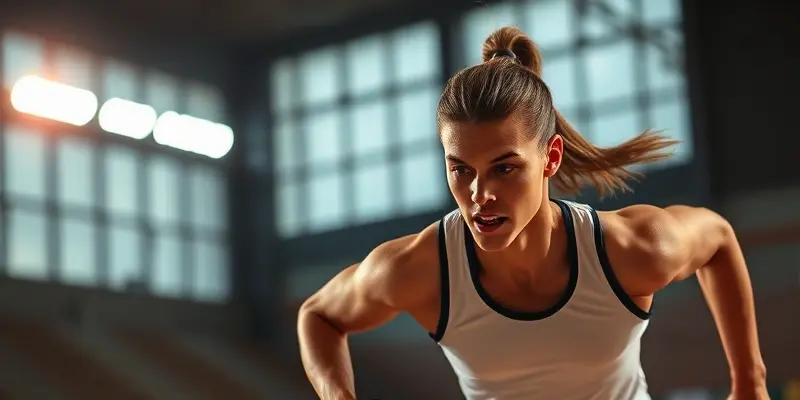Recover Right: Essential Posture Cues for Injury-Free Running
Running is more than just putting one foot in front of the other. Proper posture is a secret weapon—boosting performance, supporting recovery, and reducing injury risk, no matter your fitness level. Whether you’re a beginner jogging your first mile or a seasoned athlete returning from downtime, dialing in your form is key.
Let’s walk (or run) through evidence-based posture cues, common mistakes, and handy tips to help you recover and run safely for years to come.
Why Good Running Posture Matters

Ever felt sore knees or a stiff back after a run? Often, it’s not just the miles—it’s how you move. Proper running posture:
- Distributes impact forces efficiently, protecting your joints.
- Improves running economy, so you use less energy for the same pace.
- Aids in faster, safer recovery after injury.
Think of posture like the suspension on a car. When aligned correctly, the ride is smooth and efficient; misalignment means bumps, extra wear, and costly repairs—in our case, pain and injury!
Evidence-Based Posture Cues: What to Focus On
Here are the keystone posture cues to keep you running strong. Try integrating one at a time until they feel natural.
Head and Neck
- Tip: Keep your gaze forward and your neck long.
- Why: Looking down strains your neck and can throw your spine out of alignment. Imagine holding a tennis ball gently under your chin—not jutting forward or looking up.
Shoulders & Arms
- Tip: Relax your shoulders and keep arms moving forward, not across your body.
- Why: Tension hikes fatigue and wastes energy. Keep your elbows bent around 90 degrees and your fists loose—like you’re lightly holding a potato chip.
Torso & Hips
- Tip: “Run tall,” leaning slightly forward from your ankles, not your waist.
- Why: A tall, upright torso enables deeper breathing, while a gentle forward lean helps you roll effortlessly through each stride.
Legs & Feet
- Tip: Land with your foot under your hips (not out in front), driving your hips back and lifting your knees forward.
- Why: Overstriding (reaching your leg forward) acts like a brake, ramping up injury risk—especially to shins and knees. Focus on a quick, light cadence to naturally shorten your stride.
Table: Quick Reference for Common Errors and Solutions
| Common Error | Prevention Cue | Why It Matters ||—————————-|——————————————|———————————–|| Slouching torso | Run tall, lean from ankles | Protects back, improves breathing || Tight, hunched shoulders | Keep shoulders low and relaxed | Reduces fatigue, enhances form || Feet landing in front | Land midfoot, under hips | Lowers impact, prevents injuries || Aggressive heel striking | Shorten stride, increase cadence | Lessens shock, aids recovery || Arms crossing midline | Aim hands forward, elbows at 90° | Efficient swing, saves energy |
Real-Life Analogy: The Train on Its Tracks
Imagine your body as a streamlined train. When every carriage (head, shoulders, hips, legs) is aligned along the track, the ride is smooth and powerful. But if one carriage wobbles off-center, the whole train loses momentum and risks derailment. Running posture is your ticket to a smooth journey.
Practical Tips: From First Steps to Full Recovery
For Beginners
- Body Scans: Every mile, check in with your posture. Are your shoulders climbing up? Is your gaze still forward?
- Posture Drills: Integrate skipping, high knees, or walking lunges as warm-ups to reinforce good mechanics.
For Injured or Returning Runners
- Go Gradual: Start with walking or run-walk intervals, focusing on cues rather than mileage.
- Strengthen the Core: Planks, glute bridges, and hip flexor work build the foundation for better posture.
- Additionally, following an injury recovery checklist can support a structured and safe return to running.
For Everyone
- Use Gravity: Let yourself lean forward very slightly, “falling” into your stride. This natural movement uses less effort and reduces pounding.
- Cadence Counts: Try increasing your steps per minute by 5-10%. Apps or music with a set beat can help.
Wrapping Up: Posture Pays Off
Good posture isn’t only for elite runners—it’s for anyone aiming to move injury-free. As you hit the road or trail, remember these cues and check in with your body every few minutes. Be patient: habits take time to stick, but the reward is a stronger, more enjoyable running journey.
Every step aligned is a stride towards a healthier, happier you. Ready to run right?
If you found these tips helpful, share this post with your running group or bookmark it for your next recovery cycle. Stay tuned with GymPulse Club for more evidence-based training guidance!
